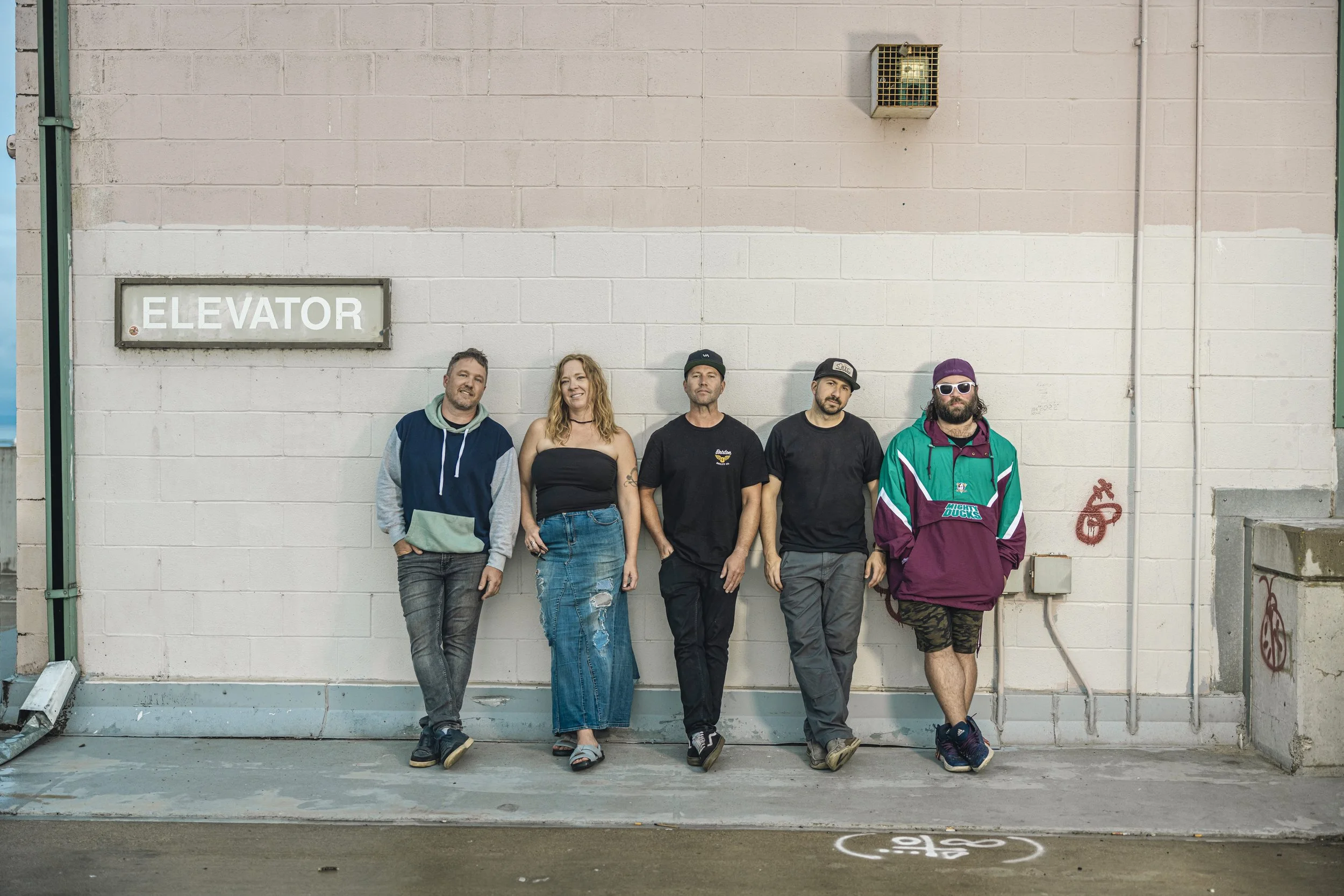
If you’ve walked the downtown strip on Red River Road at all in the past couple of weeks, you would have certainly noticed the newly refurbished exterior of the King’s Block building thanks to the freshly exposed original facade and sophisticated black paint with gold accents. You probably also noticed that brand new sign on the right side of the building for Bloom Bar + Lounge, now open and ready to party.
Since that first issue, The Walleye has published nearly 200 issues shining a light on all the remarkable people who make Thunder Bay a special place to live. In honour of this milestone anniversary, we’re turning the spotlight on 15 longtime contributors whose voices, passion, and creativity have played an integral role in shaping the magazine.
Hear ye, hear ye! This October 11 and 12, all fair ladies and lords are called to wander through the gates of Thunder Bay’s first ever Renaissance faire at the Murillo Fairgrounds from 10 am to 7 pm each day. The event is hosted by the Oliver Agricultural Society and a team of volunteers, and fairgoers are encouraged to don their best medieval capes, crowns, and chainmail for the most mystical of weekends.
Although Chef Fred Sorrell initially needed a larger prep kitchen for his business, Bread & Butter, he simply couldn’t resist the call of the walk-up window. Thus, Red River Dogs was born, and it’s already been a hit with young and old alike!
Close your eyes a moment and visualize a scenario: you’re driving back from a pumpkin picking trip, and you decide you absolutely need a breakfast delight. Then you see a true miracle on Highway 61 in the form of Cottage Time Public House, with their all-day breakfast and the subject of this month’s Off the Menu—the breakfast poutine.
“We are an authentic option for Mexican food,” says Rodrigo’s dad, Rodrigo Cosio Sr. “Whatever you eat with us is what you would be getting if you were sitting in my house having dinner, [and] absolutely everything we make is from scratch.”
What else can one say but ooh la la!
Definitely Superior Art Gallery’s annual Halloween extravaganza is back, taking over downtown Port Arthur on October 31. Last year, this event drew over 3,000 people to the Port Arthur downtown core to experience this one-of-a-kind event. It’s a party unlike any other, where the audience is as much a part of the art as the artists are.
“Photography is a way for me to find those little pieces of joy and vibrancy in the natural world,” says Thunder Bay photographer Sarah Jensen. “I was a kid that spent a tonne of time outside, just looking at every little bug and leaf and flower.”
Artists Nicole Sutherland, Anne Winkworth, and Sue Lewis debut their third art show this month at Co.Lab Gallery. The trio share a love of painting, a background in teaching, and a love for working with colour.
“I think all of us as artists in general have more to share than just our tattoos,” says participating artist Renato Marino, who has been tattooing for 11 years. “When you go to a museum or you go to an art show, [people think] ‘Oh, these are artists,’ but then they look at us and they’re like, ‘These are degenerates who draw things,’” Marino laughs.
It's hard to believe this is already Wake the Giant’s sixth annual edition, but what’s even more mindblowing is the lineup that’s in store for this September 6: Black Eyed Peas, Prozzäk, Neon Dreams, and Crystal Shawanda are just a few of the acts hitting the stage.
If it smells like teen spirit, looks like a party, and oinks like a pig, then it might just be the Tumblestone Music & Art Festival.
When Luke Warm and the Cold Ones were set to release their new self-titled album, they wanted a party, a celebration for all they’d accomplished. They wanted all their friends there—but they also wanted their families present, including young kids. The solution was hosting two shows on the same night, with an earlier slot for earlier bedtimes.
For a musician, creating an alter-ego can allow for a creativity and freedom that their public persona doesn’t allow.
Here are three artists who took the alter ego path, with varying degrees of success.
The past four years of Ooky Spooky have left behind a trail of blood, slime, and a white substance not suitable to be named in this publication—all of it unhinged and unforgettable to those who were there to see it.
This year’s lineup features a variety of genres such as drama, comedy, documentary, horror, and thriller, with an emphasis on filmmakers from the region. “Our goal is to highlight local films and the local film industry, and we’ve been accomplishing that,” says Harpelle.
Described as Fargo meets Trailer Park Boys, this dark comedy follows Jason/Tumbleweed (Ben Albert), who dreams of becoming a famous rapper. But, he needs money to get to Sudbury to record his album. With the help of his girlfriend Tiffany (Shaundra Benincasa), they come up with a scheme to blackmail his estranged dad James (Greg Bishop) into giving them the money.
Before a single frame of The Moth was shot, co-directors Michelle Derosier and Zoe Gordon were years deep in discussions about the impacts of regional development and ecological change on the land.
Director Laura-Lynn Petrick’s Lempo brings a chilling and intimate story to life on familiar northern waters. Childhood friends Shaun and Annie reconnect at neighbouring cabins, only to be forced to confront an ominous figure tied to Annie’s family history.
‘Tis the season for festivals, fun, and folk music, and Mt. Joy’s fourth LP, Hope We Have Fun, boasts 13 tracks that sound as good in headphones as they do on a festival stage.
Many of you may know Lights from her 2000s emo pop era; now, while we all may be ready to leave the extreme side bangs behind (if you know, you know), Lights’s new album A6 shows that she is ready to enter a new musical chapter.
My Morning Jacket have come a long way since their debut album, The Tennessee Fire, which was partly recorded in an improvised studio above vocalist/guitarist Jim James’s cousin’s garage. For the Kentucky-bred rock band’s milestone tenth release, they enlisted Grammy Award-winning producer Brendan O’Brien (known for working with Bruce Springsteen and Pearl Jam).
It's a curtain call for the democracy Canadians built after the world wars. Politics is evolving from an arena where powerbrokers create consensus from disparate viewpoints into a zero-sum game where stakeholders choose loyalties, the victor divides the spoils, and the losers are annihilated. Our partisan choices are either a technocratic centre-right that thinks it knows better or a rules-weary right wing that feigns no moral pretense.
I was ready for the unexpected on my first day as an outreach worker at Elevate NWO. Elevate is a harm reduction organization responding to treatment and prevention of HIV and Hepatitis C in Thunder Bay and the wider region, but also finds itself responding to other emerging issues. In Thunder Bay, that often means advocating for our unhoused neighbours in the fight for housing, not tents.
All this said, I was nevertheless surprised when all the talk of my first day was about birds!
Summer is here and it’s time to live, laugh, and litter outside.



































It’s official, the fall season is here in all of its pumpkin-spiced, red-leaved, and crisp-aired glory. Whether you’re ready for all things autumn or need a little help letting go of summer, we’ve compiled nine ways to help you celebrate the season.